Exploring the life of ace pilot Lydia Litvyak, The White Rose of Stalingrad
Born in Moscow, USSR on August 18, 1921, Lydia Vladirmirovna Litvyak always had an interest in flying. Raised in a Jewish family at the outset of one of the most exciting eras of aviation, the roaring 20’s, Lydia grew up reading about aviation, and watching military pilots practice nearby, but couldn’t have a plane of her own.
Because the communist regime in place in the USSR outlawed private property, the generation of pilots that sprang up in the USA during this time (the Barnstormers and other general aviation pioneers who were able to fly because of cheap, surplus WWI planes) didn’t make its way to Russia.
Flying Club to Military Flying Academy
However, Lydia Litvyak was born with a rebellious spirit and found her way to a local flying club at the age of 14, soloing for the first time at 15, and graduating from the Kherson military flying academy shortly after. By then, she had a serious obsession with flying and had become a flight instructor at the nearby Kalinin Air Club, where she would train over 45 new pilots.
Trying to Serve the Motherland
After Germany attacked the USSR in 1941, the 20-year-old Lydia Litvyak rushed to her nearest recruiting center and tried to join the military as a fighter pilot. Unfortunately, due to many factors, including her age, gender, and lack of flight experience, Lydia was turned away.
Learning from her past mistakes, Lydia marched down the street to the next recruiting station, filled out her paperwork, writing that she had 1,000 hours of flight experience (the minimum needed at the time to join the USSR air force), instead of the 800-900 hours she had accrued in her relatively short flying career.
The First Female Fighter Regiment
According to rumor, Marina Raskova, a famous Soviet navigator, used her personal connections with Joseph Stalin to found the three first combat regiments for female pilots. Thanks to Raskova, by the time Lydia made it past the disapproving recruiters and red tape, she was able to join the all-female 586th Fighter Regiment of the Air Defense Force as a fighter pilot.

Lydia flew only a couple combat missions with the 586th Regiment over Saratov before being transferred to the mixed-gender 437th IAP (“Istrebitel’nyy Aviatsionnyy Polk”: Fighter Regiment), where she would begin catching the attention of her fellow pilots and superiors. Lydia flew combat missions over Stalingrad with the 437th IAP before again moving, this time along with three female pilots, to Srednaia, Akhtuba.
Despite her fellow fighter pilots initial resistance to fighting alongside some girl, Lydia would quickly prove herself to be one of the best pilots among the Soviet forces. It would be here at Srednaia that Lydia would start flying her Yakovlev Yak-1 with a “36” painted on the side.
The Yakovlev Yak-1

The Yakovlev Yak-1 was a maneuverable, fast, and well-armed single seat fighter low-wing monoplane used throughout the 1940’s, retired in 1950. It was constructed with a steel frame and wooden wings, covered with plywood, and built for low-altitude combat, performing best at altitudes under 4,000 meters (13,123 feet) to protect the much slower, bulkier Ilyushin Il-2 Sturmovik attack plane.
The Yak-1 was armored and armed minimally compared to the Western air forces, but the Soviets reportedly relied more on pilot skill and marksmanship than the US and British air forces, which considered heavy armor and artillery necessary. Therefore, Russian manufacturers focused more on maneuverability and speed, and the more experienced pilots would opt to remove any extra artillery, and even radios, to give them the speed and climb advantage over the enemy Nazi pilots.
Lydia’s First Two Scores
Three days after her arrival at the 437th IAP, Lydia Litvyak had scored her first two kills in a combat mission over Stalingrad, making her the first female pilot to successfully shoot down an enemy aircraft. Four pilots from the 437th IAP, led by Major S. Danilov, flew their Yak-1’s into combat against a formation of multiple Junkers Ju-88s, escorted by Messerschmitt BF 109s.
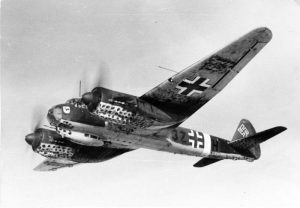
After several bursts of her 12.7 mm Berezin UBS machine gun, Lydia sent a Ju-88 hurtling towards the earth, bleeding flames. Soon after, in the same dogfight, Lydia shot down a BF 109 riding her squadron commanders’ tail. Her commander, Raisa Beliaeva, would go on to score 3 kills against the Germans before dying in aerial combat in 1943.
Shooting Holes in Sexism
Interestingly enough, the BF 109 was piloted by German double-ace (11 victories) and future Iron Cross recipient, Staff Sergeant Erwin Maier of the 2nd Staffel of Jagdgeschwader 53. After ejecting from the BF 109, Staff Sergeant Maier safely parachuted right into the hands of the Red Army.
Maier demanded to see the Russian pilot who had out-flown him, and when he was introduced to Lydia, he thought he was being made the punchline of some bad Soviet joke, until Lydia described, turn for turn, the dogfight that resulted in Maier getting shot down.
According to some sources, Maier was so flabbergasted with his defeat at the hands of a (somewhat inexperienced) female fighter pilot, he immediately took off his expensive gold watch and offered it to Lydia, to which she responded, “I don’t accept gifts from my enemies.”
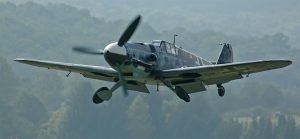
The following day, Lydia reportedly shot down another BF 109, and only weeks later, she took out another Ju-88 by killing the German regiment commander, Major M.S. Khovostnikov, and scored a shared victory over a BF 109 with the help of Raisa Beliaeva. This was the beginning of the White Rose of Stalingrad’s history-making winning streak.
What was Lydia Litvyak really like?
Lydia was a free spirit, and though she was constantly in danger, she would laugh gleefully in the face of death, and her superior officers. After returning from a successful combat mission, Lydia would “buzz” the aerodrome (essentially dive-bomb it and fly very close without hitting it) and pull her Yak-1 into aerobatic tricks over the airfield. These unbridled displays of victorious joy got her in trouble with her commanding officer every time she landed, but Lydia was probably so confident in her skill as an indispensable fighter pilot that she wouldn’t waste her time thinking about it.
Moving to the 9th Guard Fighter Regiment
After proving herself to be quite successful flying with the 437th IAP, Lydia Litvyak and her fellow female fighter pilots (try saying that five times fast) were moved to the 9th GvIAP (GvIAP: “gvardeiskii istrebitel’ nyi aviatsionnyi polk” which means Guard Fighter Regiment) so they could continue flying their Yak-1’s. The 437th IAP was equipped only with LaGG-3s, heavily armed single-seat low-wing fighters (Lavochkin-Gorbunov-Gudkov LaGG-3), and thus didn’t have the facilities to repair any damaged Yaks.
The Guards Regiments of the Soviet air force were generally the top fighter pilots of their time, and the 9th was no different. The 9th GvIAP would go down in history, both for its successes in battle, and because it was led by the Soviet war hero Lev Shestakov, a decorated fighter pilot with 26 confirmed victories.
Moving Again: the 73rd GvIAP
Only a few months later, the 9th GvIAP was upgraded with Bell P-39 Airacobra’s, and the four female fighter pilots moved again, this time to the 73rd GvIAP, so they could continue flying their Yak-1s. On February 23, 1943, Lydia was promoted to junior lieutenant and awarded the Order of the Red Star, awarded to those who have made the greatest contributions to the defense of the USSR in wartime.
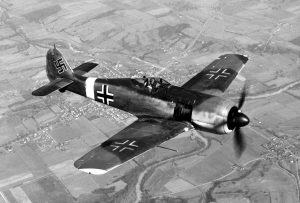
At the same time, Lydia was selected to participate in the experimental, elite aerial fighting tactic called “Okhotniki.” Okhotniki, which means “free hunter” meant that pairs of experienced, talented fighter pilots were given the freedom to seek and destroy enemy aircraft at will. During this time, Lydia scored another victory over a Ju-87, and a shared victory (with Alexei Solomatin) over a Focke-Wulf Fw 190.
A Pretty Woman in a World of Men
Lydia Litvyak never lost sight of the fiery passion and spunk that got her into the cockpit in the first place at only 14, and she never let go of her femininity. Despite the difficulties she faced as a woman in a flight regiment made up of 99% men, Lydia would sew and dye scarves out of parachute material, and coerced her friend and flight mechanic, Inna Pasportnikova, to pick up hydrogen peroxide at the local hospital so that she could continue to bleach her hair blonde. Perhaps her most aggressive display of womanhood was her love of flowers. In addition to the white rose painted on the side of her Yak-1, Lydia would stop to collect flowers whenever she could, especially red roses. She would gather them into bouquets and arranged them around the cockpit, to the chagrin of the male pilots who shared her plane. Though they would immediately throw them away, Lydia never stopped collecting them.
Shot Down for the First Time
On March 22, Lydia was flying in formation with six Yak-1’s when they engaged a flight of 12 Ju-88s and their BF 109 escorts. In the midst of the chaotic fight, Lydia managed to shoot down a Ju-88 before being hit herself by one of the escorting BF 109s. On her escape back to safety, suffering from severe structural damage to her Yak-1 and losing blood quickly, Lydia managed to shoot down another enemy aircraft (a BF 109) before safely returning to her airfield.
Unrequited Aerial Romance
While flying with the 73rd GvIAP, Lydia Litvyak often flew as a wingman (or wingwoman in this case) to Kapitan Alexei Frolovich Solomatin, a flying ace with 39 kills (22 shared). Kapitan Solomatin, in secret, romantically pursued Lydia. According to her letters to her mother, Solomatin was deeply in love with Lydia, and wouldn’t take no for an answer. Focused as she was on the tasks at hand, there are no records of Lydia returning any romantic feelings, until May 21, 1939.
On May 21, 1943, Kapitan Solomatin was training a new pilot in front of the entire regiment in Pavlonka, USSR (now Ukraine) when the plane dove into the ground, killing Solomatin on impact. It was then that Lydia realized how much she loved Alexei, and in a letter to her mother, wrote, “You see, he was not my type, but his insistence and his love for me convinced me to love him… and now, it seems I will never meet someone like him ever again.”
Lydia’s flight mechanic at the 73rd GvIAP, Senior Sergeant Inna Pasportnikova, said that after Solomatin’s death, all Lydia wanted to do was fly combat missions. She would go on to fly a total of 66 combat missions, sometimes as frequent as four or five a day. Lydia strongly believed in luck and thought that if a pilot survived their first combat missions and had luck on their side, they could continue flying safely. Shortly after Kapitan Solomatin’s death, Lydia would find her own supply of luck dwindling rapidly.
Shooting Down a Nazi Artillery Observation Balloon
On May 31, 1943, just ten days after the death of her would-be fiancé, Lydia attended a mission briefing regarding a Nazi artillery observation balloon that was reporting the location of Soviet soldiers and snipers to the German troops. Apparently, team after team of Soviet soldiers and fighter pilots had failed in their attempts to destroy the balloon, unable to break through the thick belt of anti-aircraft fire surrounding the balloon. Immediately, Lydia volunteered to eliminate the bulky, hydrogen-filled balloon but was turned down. Never one to give up, Lydia pressed on and outlined her plan of attack to her commanding officer. Lydia figured it would be smart to try a new take on the same problem and fly in a wide circle over the German-controlled territory to attack the rear. Her plan worked, and the hydrogen-filled balloon exploded and crumpled to the ground.
Lydia Litvyak, Flight Commander
Just under two weeks later, Lydia was promoted to Flight Commander of the 3rd Squadron of the 73rd GvIAP. Three days later, flying a combat mission, Lydia’s group of six Yak-1’s ran into 30 Ju-88’s, a six BF 109 escorts. Lydia shot down a Ju-88 bomber by herself, and a BF 109 with the help of one of her comrades before suffering enemy fire herself and being forced to make a belly-landing. She was wounded but refused to take any medical leave, deciding instead to hop back into the cockpit and shoot down more Nazi’s.
The Last Mission
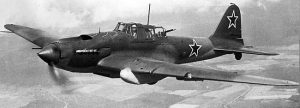
On August 1, 1943, Lydia Litvyak was returning to her airbase outside Orel (a Russian city southwest of Moscow) from her fourth sortie of the day, escorting two Ilyushin Il-2 Shturmoviks, when her flight was attacked by two BF Messerschmitt 109’s. According to her comrade Ivan Borisenko, by the time Lydia had a chance to turn and meet them, the BF 109’s disappeared behind a cloud. More BF 109’s arrived, and a violent dogfight erupted between the Germans and the Soviets.
Through a gap in the clouds and smoke, Borisenko caught a glimpse of Lydia’s Yak-1, pouring smoke and headed down- fast. Though her plane was already in tatters, Lydia was pursued by as many as eight BF 109’s before Borisenko lost sight of her. No one reported seeing any explosions or parachutes, and yet, Lydia never returned to base. She was just 17 days away from her 22nd birthday.
The Hero of the Soviet Union
On May 6, 1990, USSR President Mikhail Gorbachev posthumously awarded LydiaLitvyak the prestigious Hero of the Soviet Union and recorded her final rank as senior lieutenant. Despite a fevered 36-year search by friend and flight mechanic Inna Pasportnikova to recover Lydia’s body to prove she wasn’t captured as a German prisoner of war (the possibility that kept the Soviet authorities from awarding Lydia the Hero of the Soviet Union), there remains much controversy and debate about Lydia’s true fate.
Who shot down the White Rose of Stalingrad?
There were two German pilots who reported shooting down single-seat fighters near Lydia’s last known location on the day of her death, but academics have yet to come to an agreement on her true killer. Feldwebel (German equivalent of staff sergeant) Hans-Jörg Merkle claimed a victory over a Yak-1 near Dmytrivka (Lydia’s last known location and possible resting place), and Leutnant (German equivalent of second lieutenant) Hans Schleef, who reported shooting down a LaGG-3 near where Lydia’s plane was discovered. The LaGG-3’s were often confused with Yak-1’s in aerial combat by German pilots, and so historians accepted Schleef as a possibility regardless.
Uncovering Nearly 100 Crash Sites
Nearly four decades later, in 1979, after discovering over 90 crash sites, 30 aircraft, and many more pilots killed in action, the team searching for Lydia Litvyak stumbled across their first lead in years. They discovered that the body of an unidentified female pilot had been buried in the nearby village of Dmytrivka, the location most historians agree Lydia Litvyak was shot down.
After a team of specialists examined the body, Inna Pasportnikova said that it appeared Lydia was killed in action after sustaining a mortal head wound, and the newly discovered remains were conclusively hers. However, conclusiveness aside, many writers and historians postulate that Lydia was actually captured by the Germans and survived for a short time as a prisoner of war.
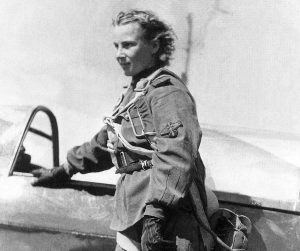
Lydia Litvyak: The First Female Fighter Ace
Lydia Vladimirovna Litvyak was a spitfire, a double flying ace with an estimated 12-14 kills, and a spunky nationalist who was determined to make a difference in the war against her country. As a woman, Lydia made history by scoring the most kills of any female fighter pilot, and cemented herself in the minds and hearts of her comrades by never letting go of the passion and fight that took her so far, made her a Hero of the Soviet Union, and a gifted, valued asset to the Red Army.
All images used without attribution are in the public domain.






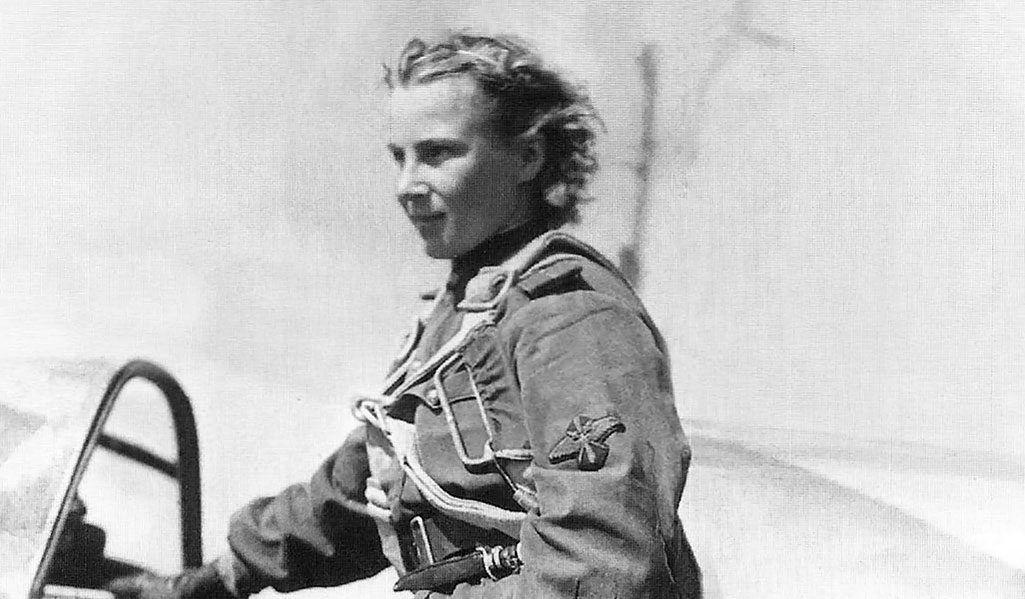







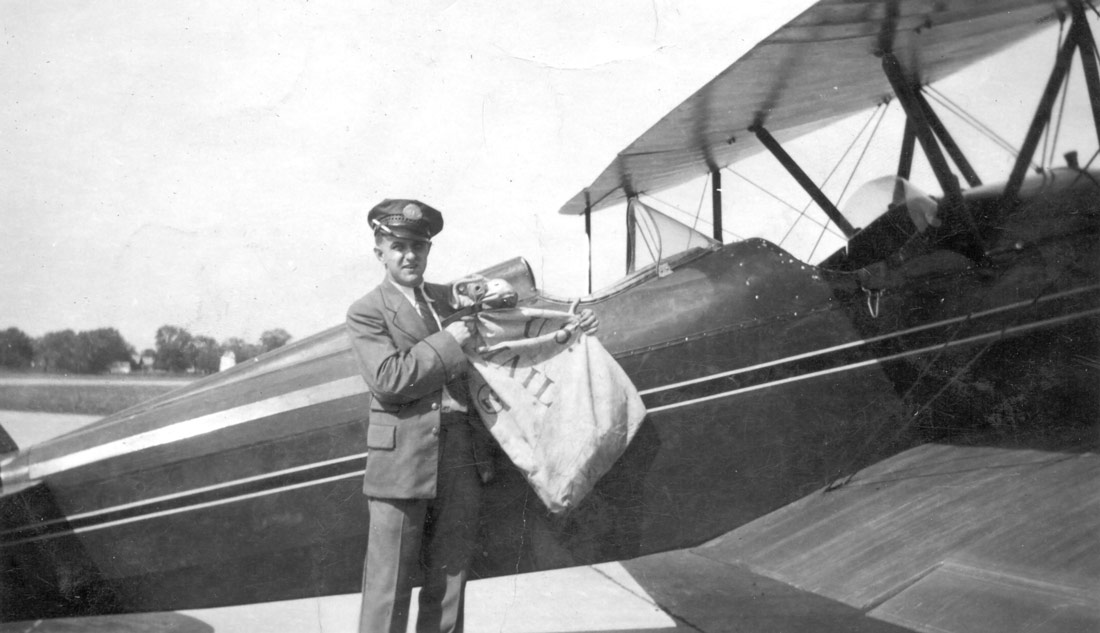
Interesting article, but the woman pictured is not Lydia Litvyak ! It’s a picture of Mariya Dolina.
Thank you for the catch. The article has been updated with an image of Lydia Litvyak.
I just found out about Lydia. Thank you for your work on her story. What an inspiration she is.
I read about 10 years ago a fictional novel loosly based on the exploits of Lydia and her plane being found and the story moves on to her struggles of being a female pilot and the somewhat hash treatment and conditions they endured and had to overcome. The story did jump from ww1 and the action of flying back to the writer and their own curiosity of trying to solve if the plane found might have been Lydia. I loved the book but I can’t remember the title except it was something like Rainbow Skies. C an anyone help. Many thanks. Errol
Looking for a fictional book about Lydia the author was investigating a possible finding of her plane some 60 years later and so wrote this interesting on her take of how the story might have ended. Not a true account but a great story. I remember that the book title had the word “skies” in it. I love it if anyone could help. Many thanks, Errol. (F)